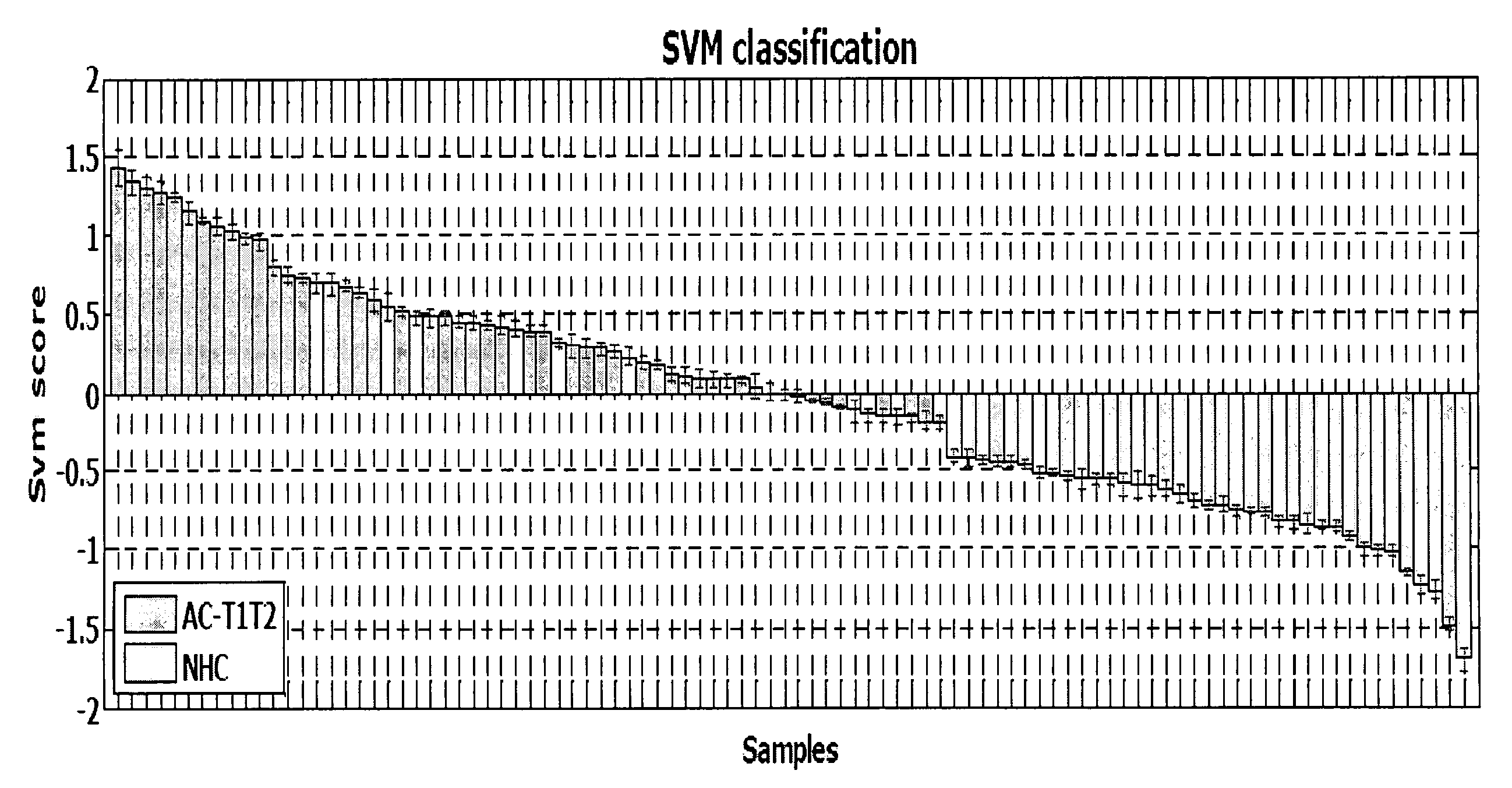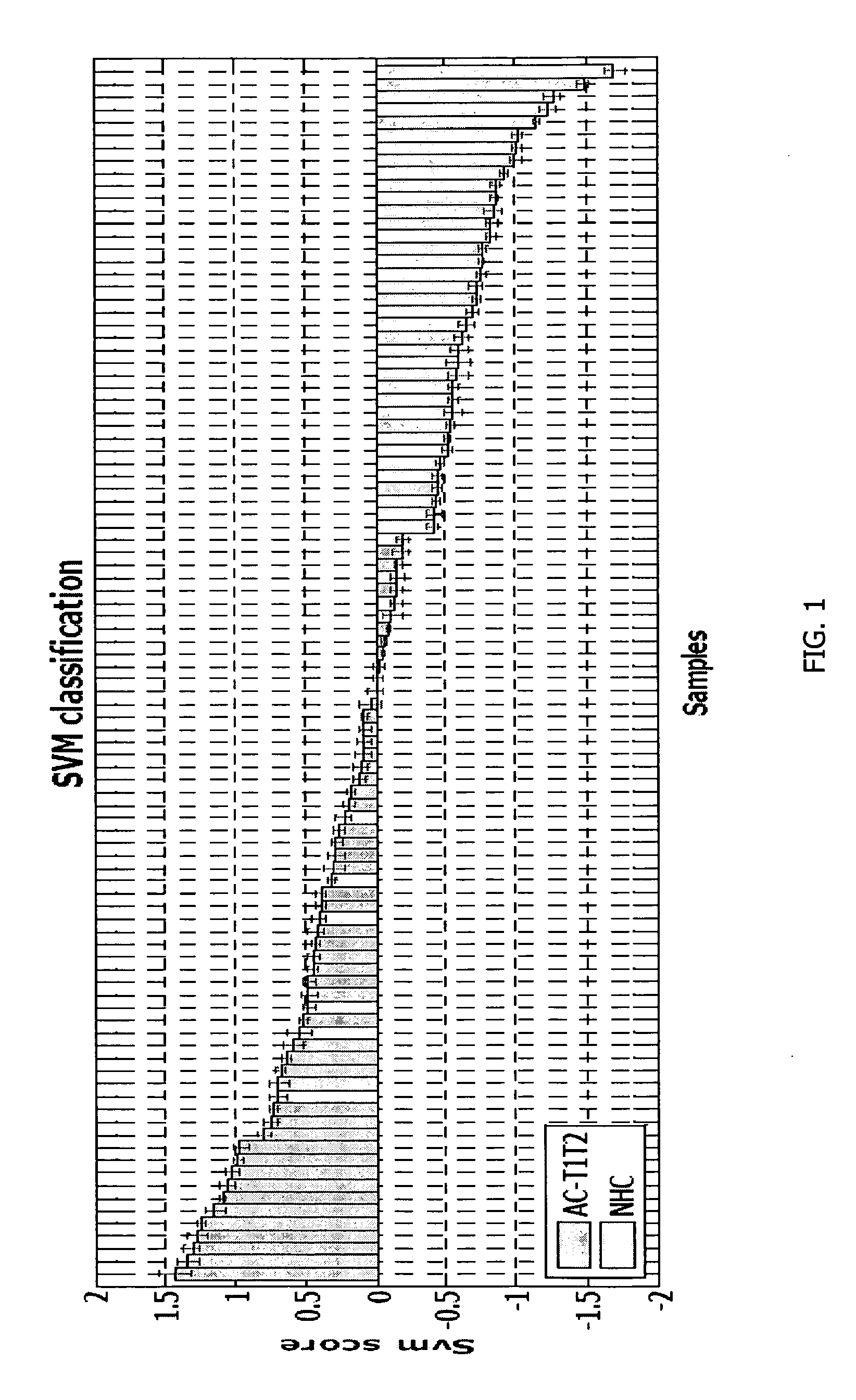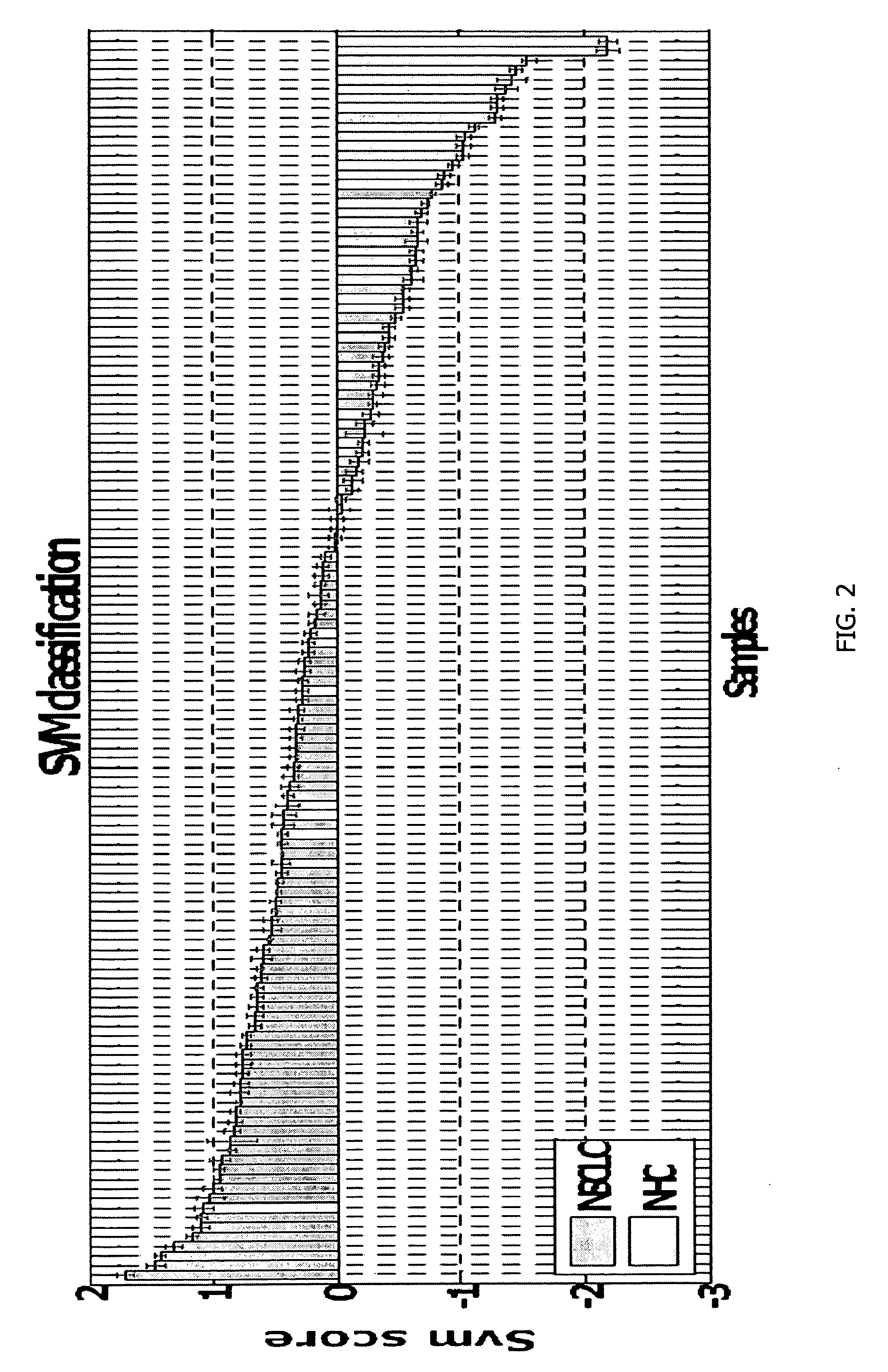Method for diagnosing lung cancers using gene expression profiles in peripheral blood mononuclear cells
- Summary
- Abstract
- Description
- Claims
- Application Information
AI Technical Summary
Benefits of technology
Problems solved by technology
Method used
Image
Examples
example 1
Patient Subject and Control Subjects for PBMC Samples
[0135]PBMC samples and clinical information were collected from 300 lung cancer patients and 150 controls, including samples from 16 patients collected pre- and post-surgery. Patient subjects and control subjects both have the key risk factor for lung cancer, i.e., smoking, and many of the patient subjects and non-healthy controls (NHCs) have smoking-related diseases such as COPD. The major difference between the 2 classes is the presence of a malignant nodule in the patient class.
[0136]A. Patient Subjects
[0137]Patient populations useful in providing data for the development of the gene expression profiles described herein include newly diagnosed male and female patients with early stage lung cancer. Inclusion criteria for selection of these patients were patients a representative number of African-American patients (about 15%), Hispanics (5%), and no Pacific Islanders. The age range of the patients was from 50-80 years. They were...
example 2
Sample Collection Protocols and Processing
[0141]Blood samples were collected in the clinic by the tissue acquisition technician. Blood is collected in two CPT® tubes (Becton-Dickenson). CPT tubes were evacuated blood collection tubes containing FICOLL reagent below a gel insert and an anti-coagulant above the gel. This is a very efficient and easy way to directly isolate PBMC. Blood is collected from the same patients during their 2-6 month follow-up visit in the clinic after surgery. Blood samples were collected in PAXgene tubes from a subset of patients and control subjects. All coded samples, including tissue blocks and blood components (PBMC, serum, and plasma) were stored based on subject identification in marked freezer storage boxes at −80 C.°. Collected samples were processed through a variety of routine steps that have been highly standardized. Samples were processed as batches (usually 20-50 samples) of both cases and controls rather than as individual samples were collect...
example 3
Methods of Processing Data for Gene Expression Profiling
[0144]The ILLUMINA BeadChip is a relatively new method of performing multiplex gene analysis. The essential element of BeadChip technology is the attachment of oligonucleotides to silica beads. The beads were then randomly deposited into wells on a substrate (for example, a glass slide). The resultant array was decoded to determine which oligonucleotide-bead combination is in which well. The decoded arrays may be used for a number of applications, including gene expression analysis. These arrays have the same gene coverage as Affymetrix arrays (47,000 probes for 27,000 genes including splice variants) but use 50-mer oligonucleotides rather than 25-mers and thus provide greater specificity.
[0145]The data analysis pipeline procedures using Matlab functions, coded PDA and SVM with RFE and SVM-RCE, were routinely and successfully used as evidenced by previous publications and as described herein.
[0146]A. Data Pre-Processing and Arr...
PUM
| Property | Measurement | Unit |
|---|---|---|
| Composition | aaaaa | aaaaa |
| Gene expression profile | aaaaa | aaaaa |
| Order | aaaaa | aaaaa |
Abstract
Description
Claims
Application Information
 Login to View More
Login to View More - R&D
- Intellectual Property
- Life Sciences
- Materials
- Tech Scout
- Unparalleled Data Quality
- Higher Quality Content
- 60% Fewer Hallucinations
Browse by: Latest US Patents, China's latest patents, Technical Efficacy Thesaurus, Application Domain, Technology Topic, Popular Technical Reports.
© 2025 PatSnap. All rights reserved.Legal|Privacy policy|Modern Slavery Act Transparency Statement|Sitemap|About US| Contact US: help@patsnap.com



